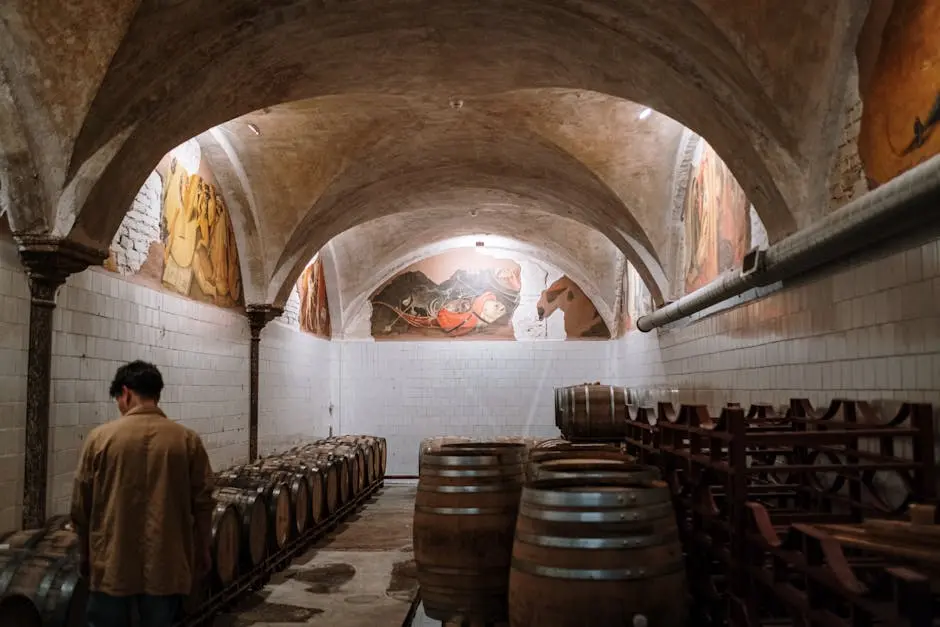How Do I Choose the Best Wine Storage Facilities in Boston?
Choosing the right wine storage facility is essential for maintaining the quality and integrity of your wine collection. Whether you're a casual wine enthusiast or a serious collector, understanding what makes a good wine storage facility can help you make the best decision for your needs. This guide will walk you through important considerations when selecting a wine storage facility in Boston.
Step 1: Assess Your Wine Collection's Needs
>Evaluate the size, type, and age of your wine collection to determine the specific storage requirements you need.
Understanding the nuances of your collection is vital. For example, if you have a mix of red, white, and sparkling wines, you’ll want to ensure the facility can accommodate various temperature needs. Additionally, consider the age of your bottles; older vintages often require more careful handling.
Don’t forget to think about how often you’ll be accessing your collection. If you plan to enjoy your wines regularly, look for facilities that allow easy access without compromising on security.
Step 2: Research Local Facilities
Look for wine storage facilities in Boston and compile a list of options that seem promising based on their services and reputation.
Start your search by using online resources and local recommendations. Boston is home to a variety of wine storage options, so make sure to consider facilities with good word-of-mouth and professional ratings.
Once you have a list, delve into each facility's website to gather insights about their services. Look for information regarding their storage capacities, the types of wine they specialize in, and any additional services they offer.
It might also be beneficial to connect with local wine shops or clubs; they can provide suggestions and share experiences regarding which facilities are highly regarded.
Step 3: Check for Climate Control
Ensure the facilities you consider have appropriate climate control features to keep your wine at the optimal temperature and humidity.
The best wine storage facilities maintain a consistent temperature between 45°F and 65°F, with humidity levels around 60% usually recommended. Such conditions prevent corks from drying out and allow your wine to age gracefully.
Be wary of facilities lacking climate control, as fluctuations in temperature can negatively impact the flavor and quality of your wine. A reputable facility will not only offer climate control but also provide data logging for you to verify these conditions are consistently maintained.
Step 4: Consider Security Features
Verify that the facility has strong security measures in place, like surveillance cameras and secure access, to protect your collection.
When it comes to the security of your wine, don’t take any chances. Check for facilities that have 24/7 surveillance, gated access, and individual locking units for each client's storage space.
Moreover, a reliable facility will provide insurance options to cover your collection in case of theft or damage. This additional layer of protection further ensures your investment is safeguarded against unforeseen circumstances.
Step 5: Look for Customer Reviews and Testimonials
Read reviews and testimonials from other customers to gauge the quality and reliability of the wine storage facilities you are considering.
Real feedback is invaluable. Gather insights on the customer service experiences, ease of access, and overall satisfaction with the storage conditions. Websites like Yelp and Google Reviews can provide a wealth of information.
Don't hesitate to ask the facility for references or testimonials from current clients either. Speaking directly to someone who has stored their collection there can offer unique perspectives that online reviews may not capture.
Step 6: Visit the Facility
>Schedule a tour of the facilities to see the storage conditions firsthand and ask any questions you may have.
Visiting potential storage facilities lets you inspect the environment and infrastructure yourself. Pay attention to cleanliness and organization—these can be indicative of how seriously the facility takes wine storage.
During your visit, inquire about temperature and humidity control systems. Ask how often these settings are monitored, and if there's a contingency plan in case of temperature fluctuations due to a power outage.
Don't shy away from asking about staff training and expertise in wine storage; a knowledgeable team can make all the difference in ensuring your collection is well cared for.
Step 7: Review Pricing and Contracts
Compare pricing options and carefully review contracts for any hidden fees or limitations before making your final decision.
Pricing can vary significantly between facilities, so ensure that you understand what is included in the base rate. Some places might charge extra for climate control or insurance, so clarify these before signing anything.
Additionally, take the time to read through the entire contract, ensuring there are no surprises. Pay close attention to the terms regarding access hours and what happens if you need to remove your wine unexpectedly.
By doing your homework and comparing costs, you can choose a facility that not only meets your storage needs but also fits within your budget.
Final Thoughts on Choosing Wine Storage
By taking the time to assess your options and consider the factors outlined in this guide, you can confidently choose a wine storage facility that meets your needs. Enjoy peace of mind knowing your collection is stored properly, ready to be enjoyed at its best.

